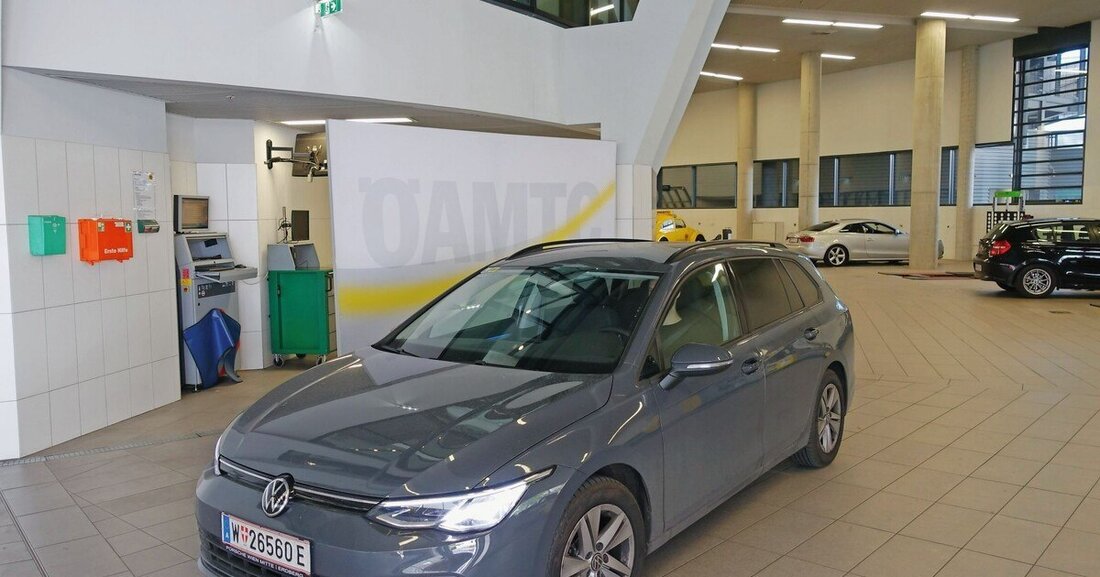Golf 8: Failure of lane departure warning system
One day, an almost new VW Golf 8 reports that the lane departure warning system is failing. Since its owner is an ÖAMTC employee, the error should actually be fixed quickly - a mistake, as it turns out.

Golf 8: Failure of lane departure warning system
Andrej Prosenc works as a coordinator at the ÖAMTC and drives a VW Golf Variant, built in 2021, with only 5,000 kilometers on the clock. The compact station wagon is powered by a 2-liter diesel engine with 116 hp and is equipped with automatic distance control ACC, lane change and lane keeping assistant as standard. One day, after starting the car, the message “Lane keeping assistant out of order” appears on the display. Prosenc decides to solve the problem in the house and asks his colleague, the experienced ÖAMTC technician Christian Klejna, to take care of the matter. So the Golf ends up in the ÖAMTC workshop in Vienna-Erdberg, which is equipped with the most modern tools and diagnostic systems. A diagnostic crime thriller begins.
- Zuerst wird die Spur des Kompaktkombis vermessen – diese erweist sich als korrekt eingestellt.
- Der Golf wird auf den speziell für die Assistenzsystem-Kalibrierung eingerichteten Prüfstand gestellt, der einen exakt nivellierten Boden aufweist.
- Nun kommt die computergesteuerte Kalibrier- und Justagevorrichtung DAS 3000 von Bosch zum Einsatz. Die zum Golf 8 passende Kalibriertafel wird im vorgeschriebenen Abstand vor dem Auto in Position gebracht.
- Das Diagnosegerät wird angeschlossen, das Fahrzeug mit der richtigen Motorisierung ausgewählt.
- Der Kalibrierprozess wird gestartet. Die Software in der Kamera sollte nun ein Vorgabebild aufrufen und dieses mit der Tafel abgleichen. Anschließend sollte sich die Kamera mithilfe der Software automatisch exakt ausrichten.
- Tatsächlich erscheint auf dem Display des Diagnosegeräts aber eine Fehlermeldung, und der Spurhalteassistent im Fahrzeug bleibt weiterhin deaktiviert.
- Nach mehreren Versuchen mit mehrmaligen Neustart des Systems hält Klejna Rücksprache mit der Bosch-Technikhotline. Dort weiß man allerdings auch keinen Rat und empfiehlt, den Vorgang nochmal zu wiederholen – ohne Ergebnis, die Kalibrierung lässt sich nicht starten.
- Der gelbe Engel weiß nicht weiter und lässt den Fall zwei Tage ruhen. Dann startet er mit frischer Energie eine neue Versuchsreihe, indem er verschiedene andere Motorisierungen im Diagnosegerät aufruft – und siehe da, plötzlich gibt es ein Match, und die Kalibrierung lässt sich problemlos durchführen. Die Fehlermeldung im Golf verschwindet vom Display, der Fall ist gelöst.
Cause unclear
“It was pure coincidence, because there is no logical explanation as to why the camera software did not match the selected vehicle,” says Christian Klejna as he reviews the case afterwards. He suspects that VW may have changed the camera model during production because the one originally intended was not in stock. But it could just as easily have been a typo when programming the diagnostic software, so that the correct camera was assigned to the wrong engine. If you consider that a modern car has more than 100 control devices on board that use different operating systems and are connected via different networks such as CAN, FlexRay, MOST, LIN and even Ethernet, it is really only surprising that most functions run completely smoothly and that the error devil does not strike much more often.

 Suche
Suche
 Mein Konto
Mein Konto